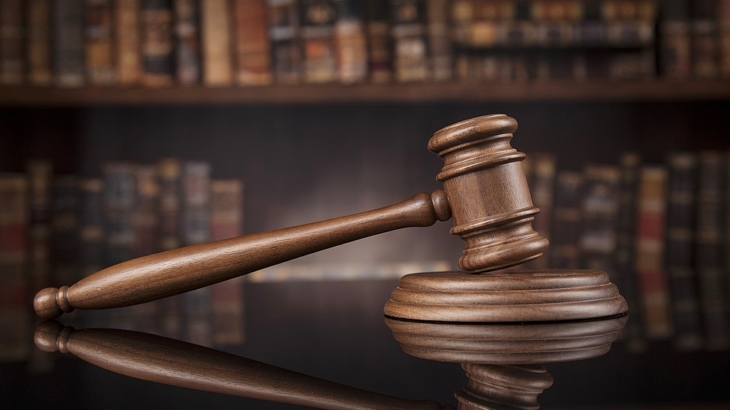LISTEN ON SOUNDCLOUD:
Consider some recent examples of the Court admitting errors on constitutional issues. In United States v. Curtiss-Wright (1936), the Court upheld a statute that delegated to President Franklin D. Roosevelt authority to prohibit the sale of arms in the Chaco region in South America whenever he found “it may contribute to the reestablishment of peace” between belligerents. The Court then added extraneous language (judicial dicta), claiming that the President possesses “plenary and exclusive” power over foreign affairs and serves as the “sole organ” in external affairs. Anyone reading the text of the Constitution would understand that the Framers did not place all power over external affairs in the President. Clearly that power is allocated to both Congress and the President.
For the phrase “sole organ,” the Court relied on a speech given by John Marshall in 1800 when he served in the House of Representatives. The year marked an election contest between President John Adams and Thomas Jefferson. Supporters of Jefferson in the House wanted to either impeach or censure Adams for turning over to England an individual charged with murder. During his defense of Adams, Marshall used this language: “The President is the sole organ of the nation in its external relations, and its sole representative with foreign nations.”
The phrase “sole organ” requires close examination. “Sole” means exclusive but what did he mean by “organ”? Simply the President’s duty to communicate to other nations U.S. policy after it had been decided jointly by the elected branches? Anyone reading the entire speech would understand that Marshall was not investing the President with plenary and exclusive power over external affairs. Instead, he merely defended Adams for carrying out a provision in the Jay Treaty that allowed each country to deliver up to each other “all persons” charged with murder or forgery. The person that Adams turned over to the British, Thomas Nash, was charged with murder. Adams was not making foreign policy singlehandedly. He was carrying out a treaty. By the time Marshall completed his defense of Adams, Jeffersonians considered his argument so tightly reasoned that they dropped plans for impeachment or a censure vote. It is evident that the Supreme Court in Curtiss-Wright merely relied on a sentence by Marshall and failed to read his entire speech to put that sentence in proper context.
Scholars immediately faulted the Supreme Court for the erroneous use of Marshall’s sole-organ speech. However, from one decade to the next, executive agencies and federal courts relied on the sole-organ doctrine to promote independent presidential power in external affairs. As noted by Harold Koh in his book, The National Security Constitution (1990), “lavish description of the president’s power is so often quoted that it has come to be known as the ‘Curtiss-Wright so I’m right’ cite—a statement of deference to the president so sweeping as to be worthy of frequent citation in any government foreign-affairs brief.”
Litigation in the George W. Bush administration led to second thoughts about the sole-organ dicta. In signing legislation in 2002, President Bush objected that several provisions “impermissibly interfere with the constitutional functions of the presidency in foreign affairs, referring to the President’s authority to “speak for the Nation in international affairs.” Implicitly, if not explicitly, he relied on Curtiss-Wright dicta. Litigation remained in the federal courts for a number of years, with the D.C. Circuit at one point holding that the case was a political question unfit for the courts, a position the Supreme Court rejected in 2012.
Turning to the merits, the D.C. Circuit on July 23, 2013 upheld independent presidential power in foreign affairs by relying five times on the sole-organ dicta. It acknowledged that the language was dicta, but emphasized it was Supreme Court dicta. It demonstrated no understanding that the sole-organ doctrine was erroneous. The opinion by the D.C. Circuit prompted me to file an amicus brief with the Supreme Court on July 1, 2014, explaining that the purpose of Marshall’s speech in 1800 was to defend President Adams for carrying out a treaty provision and that nothing in the speech promoted independent presidential authority in external affairs. I urged the Court to correct the error in Curtiss-Wright. When the Court is in session, the National Law Journal each week selects a brief that merits attention. On November 3, 2014, it selected mine, featuring this heading: “Can the Supreme Court Correct Erroneous Dicta?”
On June 8, 2015, in Zivotofsky v. Kerry, the Supreme Court rejected the sole-organ doctrine that had magnified presidential power in external affairs for 79 years. In doing so, it proceeded to create a substitute model that promotes independent presidential power in external affairs. It did that by first attributing to the President the quality “of unity at all times.” Anyone who studies the presidency recognizes that administrations regularly display inconsistency, conflict, disorder, and confusion. Memoirs written by top officials after their retirement highlight the infighting and disagreements prevalent within an administration.
To the quality of unity the Court added four other characteristics of the President: decision, activity, secrecy, and dispatch, borrowing those words from Alexander Hamilton’s Federalist No. 70. Why would the Court assume that unity plus those four qualities are inherently positive in nature and consistent with constitutional government? The five qualities could easily describe a monarchy or dictatorship. Moreover, anyone familiar with the record of Presidents, particularly after World War II, would understand the costly record of Truman in Korea, Johnson in Vietnam, Reagan in Iran-Contra, Bush II in Iraq, and Obama’s decision to order military force against Libya, leaving behind a country broken legally, economically, and politically, providing a breeding-ground for terrorism. For further details on the sole-organ doctrine, see my article “The Staying Power of Erroneous Dicta: From Curtiss-Wright to Zivotofsky,” 31 Constitutional Commentary 149 (Summer 2016).
For another recent action by the Supreme Court to correct an earlier decision, one can review the Japanese-American cases of Hirabayashi (1943) and Korematsu (1944). On February 19, 1942, President Roosevelt issued Executive Order 9066, leading to various actions against Japanese Americans. A month later, Congress passed legislation to ratify the executive order. In the first case, the Court upheld a curfew placed on Japanese Americans on the west coast. In the second case, the Court supported the relocation of Japanese Americans (two-thirds of them U.S. citizens) to detention camps. With no evidence of disloyalty or subversive activity, the United States imprisoned Japanese Americans solely on account of race. General John L. DeWitt, who established the curfew, believed that all Japanese Americans, by race alone, are disloyal. He believed that individuals of Japanese descent belong to “an enemy race” whose “racial strains are undiluted.”
Aided by scholars, Hirabayashi and Korematsu returned to court in the 1980s after newly discovered documents revealed the extent to which executive officials had deceived federal courts and the general public. A report prepared by the War Department contained erroneous claims about alleged espionage efforts by Japanese Americans. With abundant evidence of executive branch efforts to deceive the judiciary, Hirabayashi and Korematsu filed a writ of coram nobis, charging the government with committing fraud against the court. Through those actions, in the lower courts, their convictions were reversed.
Also in the 1980s, Congress created a commission to gather facts and determine the wrong done by Roosevelt’s order. Released in December 1982, the commission’s report stated that the order “was not justified by military necessity” and that the principal factors shaping those decisions were “race prejudice, war hysteria, and a failure of political leadership.” To the commission, the decision in Korematsu “lies overruled in the court of history.” In 1988, Congress passed legislation to acknowledge “the fundamental injustice of the evacuation, relocation, and internment” of Japanese Americans. At that point the Supreme Court had sufficient evidence that its decisions in 1943 and 1944 were defective and needed to be repudiated. It chose not to do that.
Not until June 26, 2018, did the Supreme Court admit error in Korematsu. Writing for the Court in Trump v. Hawaii, Chief Justice John Roberts stated that Korematsu “was gravely wrong the day it was decided.” If that is so, why did the Court take 74 years to make that admission? Given the Court’s acknowledgment that Korematsu was defective, what about Hirabayashi? Is that still good law? Why didn’t the Court repudiate both decisions?
Conclusions
In an article published in 1962 in the NYU Law Review, Chief Justice Earl Warren discussed the Court’s role in safeguarding individual rights. As to the Japanese-American cases in 1943 and 1944, he offered this explanation: “To put it another way, the fact that the Court rules in a case like Hirabayashi that a given program is constitutional, does not necessarily answer the question whether, in a broader sense, it actually is.” Clearly that is a repudiation of judicial finality. Expecting courts to regularly protect constitutional liberties is ill-advised. Warren believed that the American political system requires the judiciary to play a restricted role: “In our democracy it is still the Legislature and the elected Executive who have the primary responsibility for fashioning and executing policy consistent with the Constitution.
Louis Fisher is Scholar in Residence at the Constitution Project. During his four decades with the Library of Congress, from 1970 to 2010, he served as Senior Specialist in Separation of Powers with the Congressional Research Service and Specialist in Constitutional Law with the Law Library of Congress. His 27 books include: Reconsidering Judicial Finality: Why the Supreme Court is Not the Last Word on the Constitution (University Press of Kansas, 2019)
Click Here for the previous essay.
Click Here for the next essay.
Click Here to have the NEWEST essay in this study emailed to your inbox every day!
Click Here to view the schedule of topics in our 90 Day Study on Congress.



